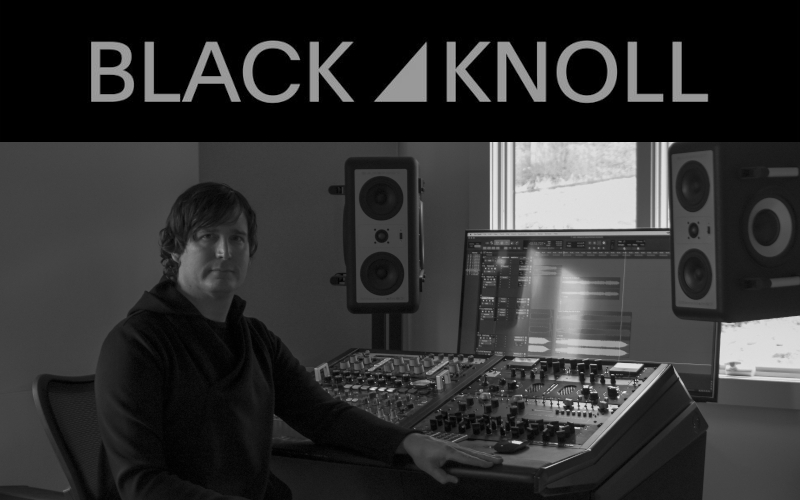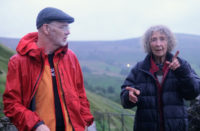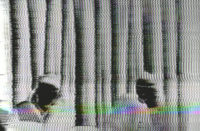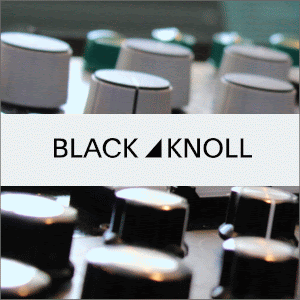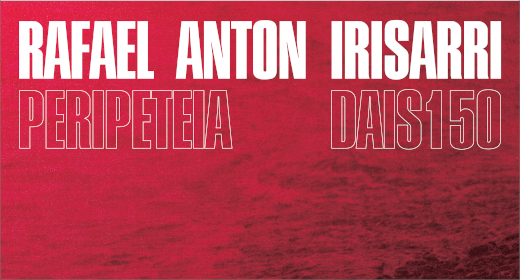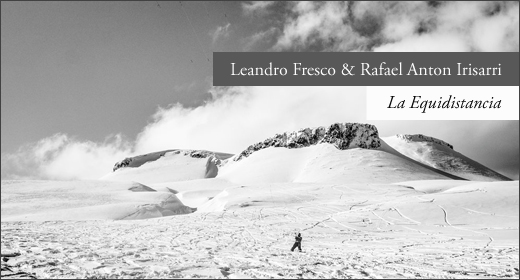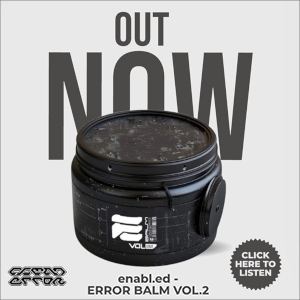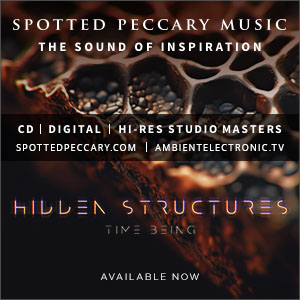Igloo Magazine presents Five Questions for New York-based Black Knoll Editions label operator, musician, and Black Knoll Studio analog/digital mastering Engineer Rafael Anton Irisarri to plunge into his experimental ambient sonic forms, and learn more about the label, mastering studio, and artistic trajectories.
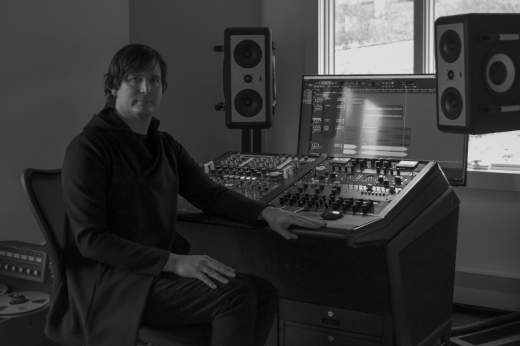
Five Questions with Rafael Anton Irisarri
- When did Black Knoll Studio and Black Knoll Editions start up and what was your inspiration?
Rafael Anton Irisarri :: My music career started through organizing electronic music shows in Seattle during the thriving ‘00s scene. I often ran the sound at these shows, which is how I initially honed my engineering skills: working behind the FOH soundboard at venues. That experience led me to work in the studio, where I went even further into audio recording. I fine-tuned my artist friend’s recordings and became obsessed with learning more about the mastering practice. I’d spend countless hours reading, studying, and having hands-on training in different studios. After a few years, more artists and labels sought my mastering, so I committed fully and set up a professional mastering studio in my home. My first studio in Seattle, circa 2010, was positioned on the side of the house where it didn’t get much sunlight. The room was darkly lit and faced a hillside, so I called it Black Knoll.
I moved to New York over a decade ago. During that move, everything in my studio, and all my possessions were stolen. It was a devastating and incredibly stressful time, but I was more determined than ever to start Black Knoll from scratch. Thanks to the kindness of strangers, friends, listeners, and the incredible support of the Ghostly International family, my studio was rebuilt in 2015. BKS has steadily gained a solid reputation and had a healthy client base since. For inspiration, nothing beats the heartfelt appreciation I receive for my work from artists whose music I’ve admired throughout my life: musical heroes like Ryuichi Sakamoto (RIP), William Basinski, and MONO, among many others. I remain deeply grateful and feel blessed to do something I genuinely love for my job.
Earlier this year, I founded my label Black Knoll Editions. It felt like a natural step on my artistic path to have control of my music. Eventually, I hope to be well-positioned to support other artists too. My current plan for BKE is to release new RAI works while reissuing my long out-of-print albums on BioVinyl. This newer technology replaces petroleum-based PVC with recycled biomaterials (like used cooking oil). The LP is 100% recyclable and reusable in the circular economy. It’s a drop in the bucket of environmentally sustainable practices in the music industry, but a step in the right direction. While the technology is new, I’m optimistic it will become the standard as more labels and artists adopt it.
- Who were some of your initial artist relations and did your location help or hinder progress?
Through my various curatorial projects when I lived in Seattle, I had the opportunity to connect with many of my musical heroes. I have shared the stage with artists I admire, including the likes of Biosphere, Jóhann Jóhannsson, Fennesz, Robin Guthrie, and Harold Budd. I have also met, played with, and worked alongside dear friends in the Pacific Northwest like Benoît Pioulard, Eluvium, Grouper, and Helios. Seattle has a special place in my heart because the community fostered these memorable encounters by supporting our music festivals and shows. When I relocated to New York, the pace of life accelerated significantly due to being situated near such a vibrant music hub as NYC. Being amidst the bustling Brooklyn scene opened me up to countless opportunities and encounters with other artists, labels, and people working in music.
All my experiences as a touring artist have allowed me to cultivate a robust global network which greatly benefits my studio work in the long term. Today, I am fortunate enough to receive clients from all over the world, and this both informs my creativity and inspires me in so many ways.
Artist relations and location played a crucial role in the second album Impossibly Distant, Impossibly Close released in March on my BKE label. This album was a collaborative effort between myself and Abul Mogard that came out of us both playing a concert at SoundSet Series at Madrid’s Condeduque Cultural Center in 2023. The encore we played together for that show ended up being one of the tracks on the album. So it was due to our shared mutual respect, and the chance to play together in Spain, that this album was even made.
- What were some of the challenges (if any) of starting up a label and mastering boutique? …and how did you envision the label/studio to stand apart?
In this day and age, it is incredibly challenging to start a label. Streaming has massively depleted the revenue potential for artists and labels, and even those with a good following are struggling. For those starting out, it’s an uphill battle to build an audience and be successful.
Only a small percentage of songs make a decent amount of money with streaming, so recording budgets for independent artists are next to none. I remember when an album had the support of a team of people devoted to realizing the artist’s vision. Something magical happens when you get that collaboration of people working together to achieve the same goal. Nowadays the artist/producer does the recording, the mixing, and in some cases, even the mastering. Consequently, the production quality has declined drastically over the last decade, and it’s not helped by how most people consume music (illegally downloading it, YouTube lo-fi, or paid streaming subscriptions) but rather contributes to the decline.
For those who remember the world before streaming took over, this is a very different one in which we now live. Music is no longer the product being marketed or sold, instead, it’s the listener’s data. The artist is a “brand” and they create “content.” We are in a time where we are constantly bombarded with “content” on social media and streaming platforms. Take the so-called “Spotify Ambient.” This sound has become watered down and generic, thanks partly to all the Muzak clearing houses creating material for most of the “sleep” and “stress relief” style of playlists.
Whenever an actual artist shows up on those playlists, let’s say the great Otto A. Totland for example, you can immediately hear the difference between his music and Muzak. Otto writes music that conveys rich and nuanced emotions with many layers of meaning. His music wasn’t solely written for the sake of playlisting it. His music was written because it genuinely meant something special to the composer. Muzak clearing houses have been discussed ad nauseam in many industry exposés about “Spotify fake artist” trends with companies like Epidemic Sound and their catalog of ambient rip-offs.
Integrity and social responsibility are core to my work. To ensure my contribution is positive, I listen to the material before committing to any project. If I don’t like the music, I won’t touch it. ~RAI
Some companies exist solely to create content for playlists. Think about that for a moment! Composer staff are paid to make royalty-free clones of well-established artists. The companies see which songs are performing well on Spotify-curated playlists, and the clearing house creates a similar-sounding song so Spotify can remove the original from their curated playlist without paying royalties. This practice exists in advertising, when agencies create music for an ad “inspired by” (i.e. ripping off) the music they don’t want to pay the licensing fee for. Somehow, this is legal. You end up with “artists” like Jonci (yes, that’s Jónsi with a “C”) who have millions of plays, sounding exactly like Sigur Rós, and you have zero information about the artist.
Clearing houses can now easily create thousands of meaningless ambient-adjacent tracks to be put on playlists with the unsuspecting consumer having no idea. AI technology makes this all even easier. The lack of credits on streaming platforms is another massive problem, particularly for music workers like myself who depend on album credits/credentials to generate business and get gigs as engineers, producers, etc. The music is stripped of production, artwork, recording, mixing, and mastering credits. I could go on, but the point is that there are many challenges for artists, labels, mastering engineers, and anyone making music now.
Regarding what sets my mastering practice apart from others — I am highly selective about the material I choose to work on. I only take on music that I genuinely believe in and enjoy. How can anyone do a good job if they don’t truly enjoy the music they are mastering? I refuse to take money for helping release another subpar album into an already crowded music scene. Integrity and social responsibility are core to my work. To ensure my contribution is positive, I listen to the material before committing to any project. If I don’t like the music, I won’t touch it. Period. I also believe in blunt honesty, without any “holistic” pretenses. I either like your music or I don’t. Working on something I don’t enjoy is dishonest. With my label, I see no point in saturating the audience with monthly, let alone weekly releases. Not only is it hard to keep track of as a listener, but whenever labels do that, I feel like most of the releases are simply not quality ones.
I want to keep things focused and with the same attention to detail that I put into my mastering work. There is a fine line between being prolific and releasing every half-baked idea that comes your way. I don’t feel a need to contribute to the deluge of music. Enough social climbers in the ambient/electronic scene are taking up more than their fair share of space. I’d rather focus on quality and integrity.
- What is your motivation in keeping the label and mastering studio moving forward into the next decade? How you take the label’s sound to the listeners and fans. Is there a specialized focus (ie. analog mastering) that you can expand upon?
The label is in the beginning phase and I’m taking things very slowly with carefully planned releases. The first release Midnight Colours had months spent revisiting the songs and creating new artwork by the amazing Daniel Castrejón — one of my favorite designers today. A brilliant remaster was done by mastering engineer Stephan Mathieu at Schwebung. For me, the remastering was one of the most crucial things. I can’t stress enough how important it is to have the opinion of your peers, and someone whom you greatly respect. Stephan gave me excellent feedback on the selection of mixes and the overall aesthetic. It was very similar to how I operate in my mastering practice and I appreciated having that perspective from someone else.
The second release with my artist friend Abul Mogard had an incredible reception from the press and listeners alike. Having blogs and reviewers like Igloo Magazine talk about the release helps immensely. I also appreciate whenever listeners share that they’ve bought an album or are listening to our music online. It genuinely helps spread the word. It’s become next to impossible for me to share anything on social media, as you are constantly fighting against the algorithm, and nobody who follows you ever sees your posts. Having support from listeners means everything. This label is about the listeners, and it’s about the music.
My approach to mastering is rooted in respect for the artists and music I believe in. I mostly do my mastering process and sweetening in the analog domain, and thus I’ve curated a great collection of high-end analog equipment to use in my studio. Mastering audio can be like flying an airplane: it is all about how many hours of experience you have clocked in. The nice analog gear helps, but it’s nothing without knowledge and experience. Critical listening is the single most important part of any mastering studio. You can’t correct what you can’t hear accurately. I’ve invested quite a lot into this aspect — my room’s acoustics were custom-designed by a studio designer to create a neutral listening environment. My studio’s monitoring path consists of dedicated mastering-grade digital-to-analog converters, and monitoring controllers with high-end speakers and headphones.
- Tell us more about how you (and your staff) take the label’s “sound” to the listeners and fans. What sets Black Knoll mastering apart from others?
Mastering is a system of checks and balances, a compromise between the artist’s vision and ensuring the music translates well across various playback systems. As an artist myself, I seldom master my music. I relish having that extra pair of ears listen to my creations, opine, and give me some feedback. When you get deeply involved in a project you can lose perspective, and having someone confirm or refine your initial approach is invaluable. An impressive array of expensive equipment (sometimes a piece of gear that costs as much as a luxury car) means nothing if the engineer doesn’t understand the material, or the artist’s intention and aesthetic. I wouldn’t want, for example, the same engineer who worked on the latest, trendy atrocity, touching my music – it just wouldn’t be right for me. Thus, I have built close relationships with a few engineers who suit my taste in music, understand the vision behind my work, and know how I intend it to sound. My role as a mastering person is to do the same for others: understand the aesthetic and vision fully.
When you get deeply involved in a project you can lose perspective, and having someone confirm or refine your initial approach is invaluable. ~RAI
Mastering is often perceived as a “dark art” because it’s a mysterious process that most artists don’t fully understand. Unlike some engineers who enjoy this secrecy, I prefer to demystify it. I believe in educating artists about mastering to enhance their production skills. Mastering is a blend of technical skill and artistic insight. The sound I strive for combines my room, speakers, equipment, expertise, and an artistic touch. Good mastering respects the artist’s intent while adding refinement and character. It’s not about making the music louder — it’s about enhancing the quality and uniqueness of the music. This personalized touch is something only a human ear can achieve, not an algorithm.
Lastly, to call yourself a mastering engineer and offer mastering services — you need the necessary qualifications, expertise, and a professional setup. High-quality monitoring and processing equipment in a dedicated studio environment is essential. Anyone who calls themselves a mastering engineer or offers a mastering service without these is doing artists a great disservice!
I sought out tutelage and mentorships and did the many hours of extensive ear training and hands-on experience in the studio required to be a full-time mastering engineer. I value the trust of the artists I work with and want to help them make their work sound its best.
Impossibly Distant, Impossibly Close is available on Black Knoll Editions. [Bandcamp | Anost]






